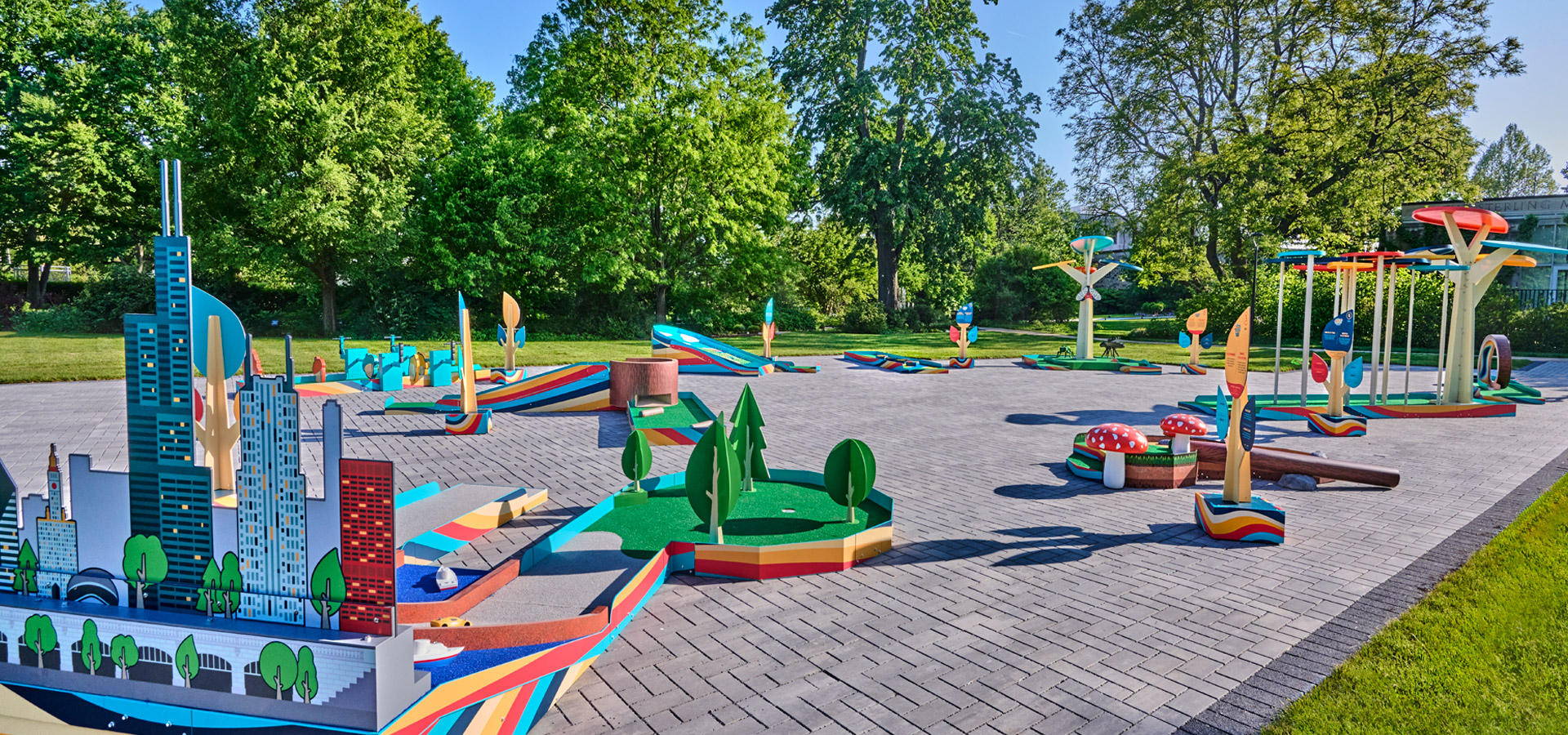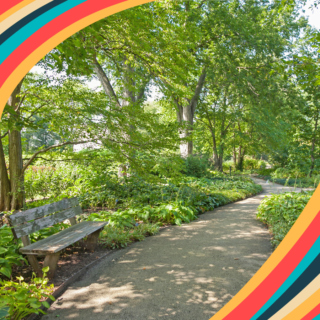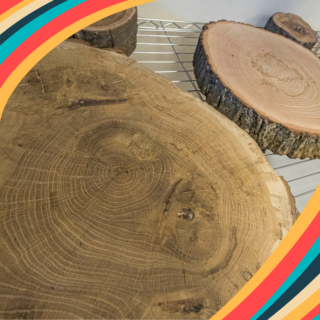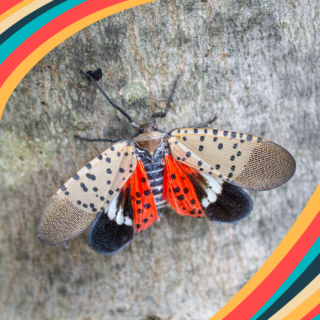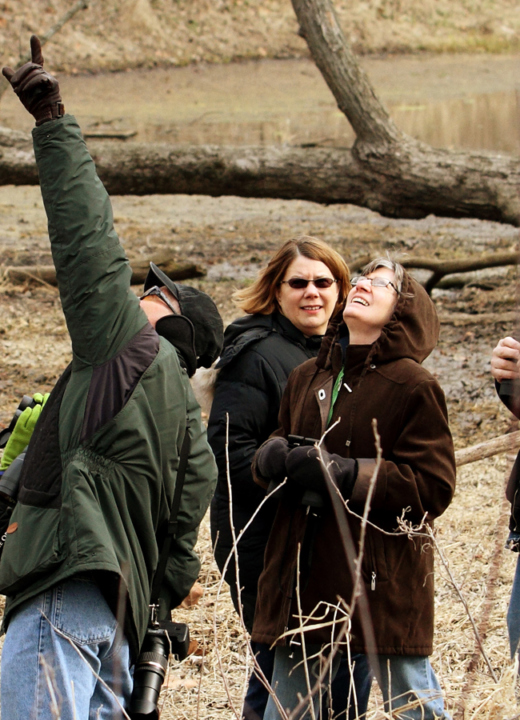After a round of mini golf, keep the fun going by exploring the woodlands, gardens, tree collections, and prairies of The Morton Arboretum through these curated adventures! Each adventure is a splendid opportunity to enjoy the outdoors and learn more about the concepts in Wonder Woods Mini Golf.
Each of the following adventures will take you through the Arboretum’s gardens, tree collections, and natural areas.
Here are some suggestions and attractions at the Arboretum, beginning near the Wonder Woods Mini Golf course.
Children’s Garden: Just across from the Visitor Center, the Children’s Garden is a 4-acre outdoor play space that encourages children to romp, climb, splash, see new things, and wonder about trees and nature. Next to the Children’s Garden is a twisty, puzzling Maze Garden. Find the secret to reach the big sycamore tree for a towering view!
Colorful gardens: To take a break among shady trees and colorful flowers, enjoy the nearby Ground Cover Garden, with its tranquil benches, and The Gerard T. Donnelly Grand Garden, with bright blooms, a sunny plaza, long vistas, and plenty of places to sit and enjoy.
Refreshments: The Ginkgo Restaurant and Cafe are just inside the Visitor Center, along with fully accessible restrooms and a gift shop for that perfect souvenir.
Paved paths: The Visitor Center is surrounded by paved, accessible trails that lead around lovely Meadow Lake and among stately, cool trees in the Conifer Collection. Exploring these trails is a perfect way to spend a half-hour to an hour.
Wood-chipped trails: For a longer adventure, take a short or long walk along one of the more than 16 miles of trails at the Arboretum. A short drive on the one-way road loop will bring you to 33 small parking lots where you can stop to stroll and marvel as you walk through the Arboretum’s 1,700 acres of trees and prairies. Trails beyond the central area are covered in wood chips for good footing. The Big Rock Visitor Station (Parking Lot 13 on the East Side) and the Prairie Visitor Station (Parking Lot 25 on the West Side, at the Schulenberg Prairie) are trail hubs with accessible portable toilets and short paved path loops.
Oaks are among the most magnificent and important trees at The Morton Arboretum and all over the Midwest. Oak trees have been in North America for more than 45 million years, according to evidence from DNA. These trees and their acorns support hundreds of other kinds of plants and animals. Check out these places at the Arboretum to learn more about these majestic trees!
Children’s Garden: Explore a giant acorn and play Acorn Plinko to help understand the odds against an acorn growing up to become a tree, even though in a good year a large oak tree may drop 10,000 acorns.
Oak Collection (Parking Lot 8 on the East Side): Discover more than 80 species of these splendid trees, with many different leaf shapes and branch structures. If you look closely at a branch in late summer, you may see baby acorns developing. While you’re at the Oak Collection, challenge yourself. Can you find three different kinds of oak trees with different leaves?
East Woods (Parking Lots 8 to 14 on the East Side): Take a hike along the trails in the eastern part of the Arboretum, through woods full of oak trees. The Big Rock Visitor Station (Parking Lot 13) is the best place to begin your adventure on a trail through the East Woods. These oak-dominated woodlands are the native type of forest for northern Illinois. The tall oak trees are keystone species because they support hundreds of other types of plants and animals that feed on them or live in them.
Can you spot birds or other animals in the oak trees? Don’t just look overhead; look at the fallen trees, too. Trees that fall over are left in place to provide homes for animals and to slowly decay and improve the soil for our native plants. Can you find any animal homes in fallen trees or in the ground? Think like a chipmunk and look for small holes! There are lots of places to hide in the woods.
Some of the most important parts of a forest are under your feet, where roots, fungi, and other microorganisms live together. Fungi are part of an important web of underground organisms that break down dead plants to make a healthy environment for plants’ roots. At the Arboretum, scientists study how trees, their roots, fungi, and other soil organisms live and work together.
Children’s Garden: Check out the giant climbable roots in the Every Which Way section to appreciate how roots anchor and support trees and bring them water and nutrients. Notice that the roots grow sideways, not down. Tree roots spread out just below the soil and most of them are no more than 12 inches underground. If you were a root, imagine how big and strong you would need to be to anchor a 60-foot-tall tree!
Big Rock Visitor Station (Parking Lot 13 on the East Side): Drive to this visitor center on the East Side and take a hike along the Woodland Trail or the Heritage Trail through the Arboretum’s East Woods. Look overhead at the majestic oaks and other trees and then notice the layer of dead leaves, trees, and other litter they have dropped to the ground. This leaf litter layer is slowly being broken down by soil organisms including fungi to become rich, healthy soil that will support those trees. Keep an eye out for the wide variety of fungi growing on dead tree trunks and branches. Can you find three different kinds of things growing on dead trees?
In your yard: Next time it rains, look around in your lawn or garden for mushrooms that suddenly pop up. Mushrooms are the fruiting bodies sent up by an underground fungus so it can reproduce. If you see mushrooms, that means there is plenty of healthy life in the soil underneath your lawn or garden, including fungi that work with the roots of trees and other plants. Though they might look weird, mushrooms are good news and a sign of healthy soil! (But don’t eat them—get your mushrooms from the grocery store!)
Making shade is one of the many ways trees benefit people. Trees can help keep communities cool in a warming climate and save energy. Trees also help clean our air, shelter animals, and reduce stress. To make sure that people in cities and suburbs live among green, healthy trees, the Arboretum’s scientists study how best to care for trees, and they develop new kinds of trees that can grow well in difficult conditions in a changing climate.
Ground Cover Garden: Just south of the Wonder Woods Mini Golf course, stroll among the spreading trees in this serene garden to appreciate how trees create shade. Think how much cooler a house is if it’s in the shade of a big tree!
Plant Clinic: Right near the Visitor Center is the Arboretum’s Plant Clinic, where experts can give you and your family advice on how to take good care of the trees in your yard and your neighborhood. What is the most important thing you can do to help trees? Water them! Even big trees need a drink when the weather is hot and dry.
Your community: As you head home, notice the trees in your community and think about how all they do for you! By reducing pollution and flooding, cooling homes and sidewalks, lowering stress, increasing property values, and sharing their beauty, trees provide many, many benefits. Become a tree champion and plan to care for trees in your yard and your neighborhood, by watering and protecting trees. Are there few or no trees? Think about how you could take action to bring new trees to your community!
There are so many different types of trees. That’s a good thing! Different species can grow well in different places or different climates, and more variation means more possibilities for the future of trees. Arboretum scientists study trees’ DNA to understand their evolution, how they are related, and how to make sure there are enough differences among trees for the future.
Children’s Garden: Walk the Tree Walk in the Children’s Garden to learn how to recognize some common kinds of trees you might find in your neighborhood. What are the differences in the shapes of their leaves?
Tree Collections: To see the amazing variety and differences among even closely related trees, stroll through the Oak Collection (Parking Lot 8 on the East Side) or the Maple Collection (Parking Lot 14 on the East Side). Look for differences in the shape of the leaves and the size and form of the trees. Are some leaves pointier than others? Or skinnier?
Your neighborhood: When you get home, take a walk around your block or neighborhood and see how many of the trees are the same species. Do you see a lot that are the same? How many different kinds are there? If you get a chance to plant a tree, plant something different from other trees in your neighborhood. The Plant Clinic can help you choose a tree species that will bring more diversity to your community.
Tree rings can tell the hidden history of a tree. Wider rings can indicate more growth in a year with more rainfall, thinner rings may indicate a drier year with less growth, or a dark ring may be a sign of fire that happened that year. Arboretum scientists can drill out long, thin, pencil-like samples from a living tree to examine its rings without cutting it down. By putting together information from many trees’ rings, scientists have constructed a picture of changes in the climate going back thousands of years.
Gateway to Tree Science: (Parking Lot 8 on the East Side): Besides tree rings, there are other ways to look inside a tree. Scientists studying how to best take care of trees use sound to see pictures of trees’ insides. Learn more about the work of tree scientists and the arborists who care for trees at the Gateway to Tree Science. Research at the Arboretum helps arborists figure out better ways to keep trees healthy.
Your neighborhood: Look at some of the biggest trees you can find on your block or on your way to school. Can you imagine how old they are? Looks can be deceiving! Sometimes a fat tree is younger than a thinner tree. If a tree is 100 years old, what are some of the things that have happened since it was planted?
The vast majority of insects we see in the world around us are good and beneficial to us and the ecosystem around us. They pollinate plants and provide food for many other kinds of animals. Still, the arrival of a new insect from far away into an ecosystem can cause big problems for trees and plants. Invasive insects and diseases such as the emerald ash borer, Dutch elm disease, spongy moth, and spotted lanternfly have killed many trees. You can help Arboretum scientists and other researchers handle these threats by looking out for invasive insects. At the same time, you can appreciate all the many wonderful kinds of insects that live around us! In May, you will be able to get a close look at the big, loud, entirely harmless 17-year cicadas.
Children’s Garden: In the Tree Walk in the Children’s Garden, can you find an ash tree? Probably not–because it isn’t there! Like many ash trees, the ash tree that once stood here died because of the emerald ash borer, an invasive insect. Have you noticed people cutting down sick trees in your neighborhood? It might be because of bad insects.
The woods or the prairie: Not all bugs are bad. Take a walk in the East Woods (start at Parking Lot 13 at the Big Rock Visitor Station) or the Schulenberg Prairie (Parking Lot 25) and you’ll see dozens of kinds of insects. How many different kinds of insects can you see? Some are large, such as butterflies, dragonflies, and honeybees. But if you look closely at the plants or the ground, you may spot many smaller insects, such as ants and aphids. It takes all kinds!
Your community: Keep watch this summer for nymphs or adults of spotted lanternfly, the latest new invasive pest to reach Illinois. The nymphs look something like a wide, long-legged beetle. At first they are black with white spots and long antennae; in the last nymph stage, they are red with white spots, about ¼ inch long. They hop but do not fly. Their final metamorphosis, about the first of July, will turn them into a 1-inch-long adult flying insect that has two pairs of wings, one gray with black spots and one red and black. If you see one, take a picture and send it to lanternfly@illinois.edu, so scientists can evaluate it and add sightings to a central database. Then squash the bug.
